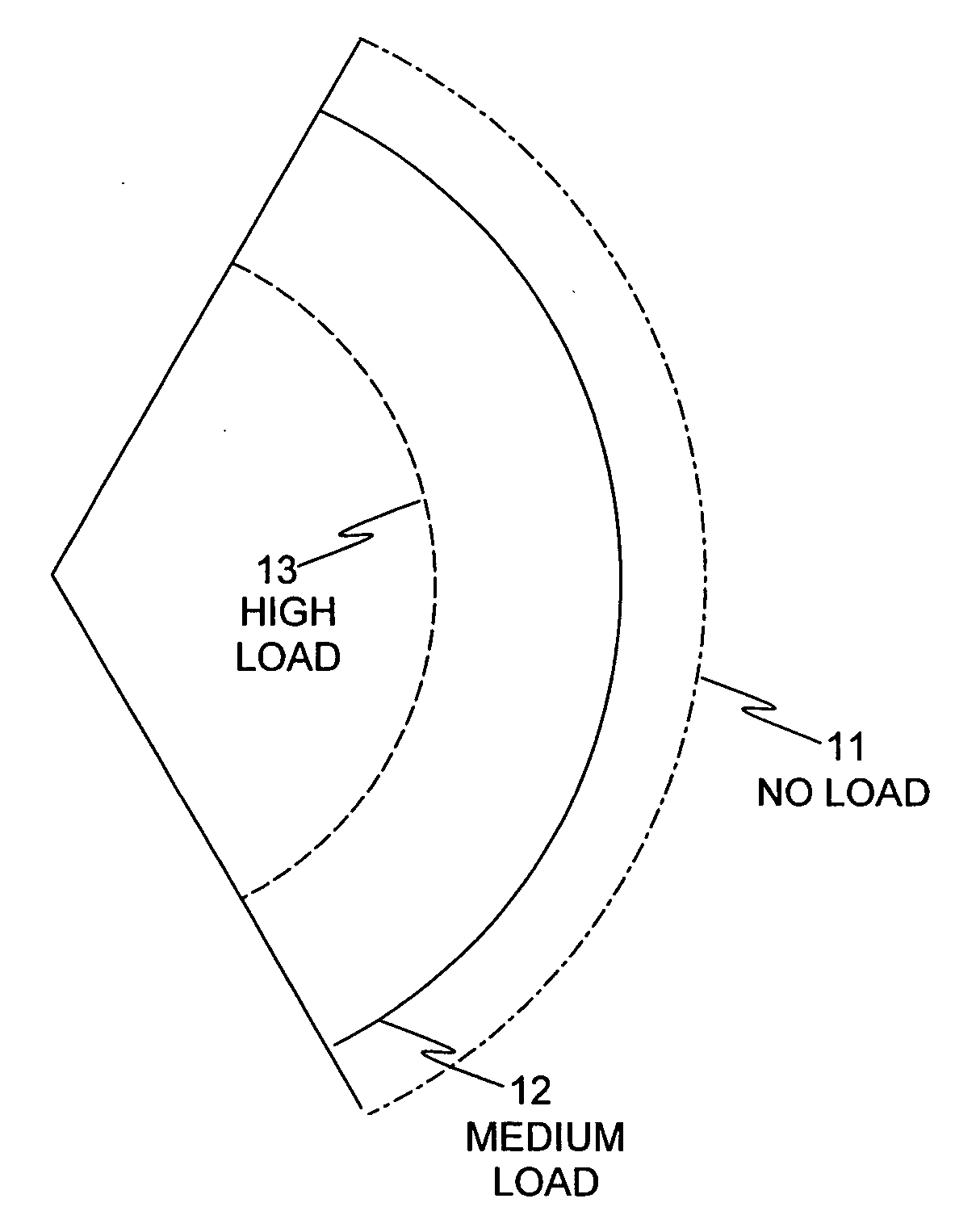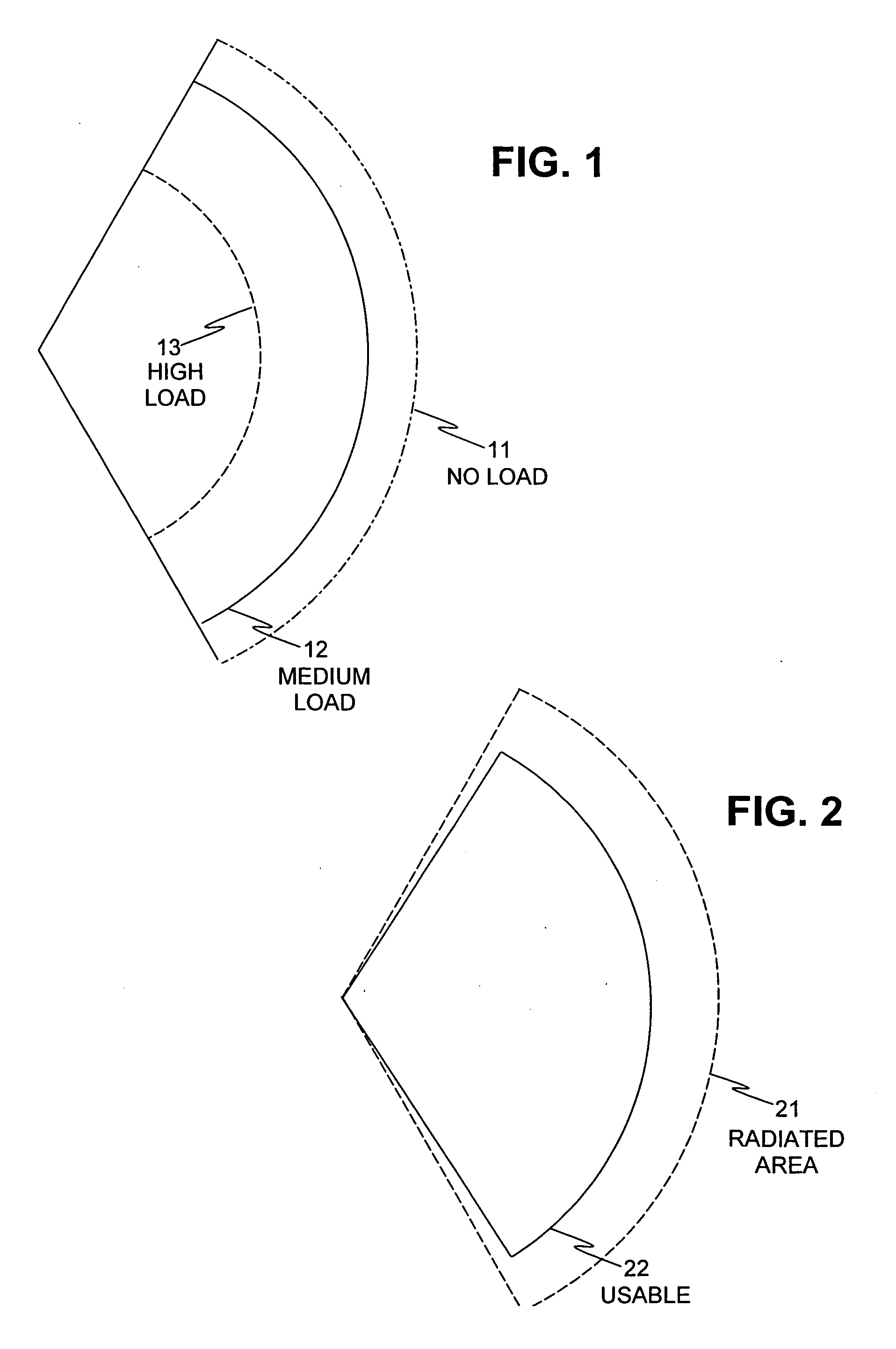Interference may obscure the signals being received and thus increase the error rates.
In consequence, all signals of one cell may disturb all the signals in the neighbor cells.
At the same time, the received
signal quality in the neighbor cells decreases, e.g., the error rates may increase.
If the power were to be controlled by a cell with a bad
signal quality, then the quality in the best cell might be much too good (e.g., the signal power would be higher than necessary) and, hence, too much interference might be generated.
The “limitation” referred to here is with respect to the network load in UL and DL, ie., the number of users with the required service (e.g.,
data rate) and the associated power needed to support those services at the respective user locations.
“Interference limitation” may mean that the load in a network (e.g., basically the load in every cell) may not be increased above a certain level without impacting the quality of the active services.
For a certain network load, the interference may reach a maximum tolerable level such that additional users or existing users requiring more power might generate additional interference, which might not be compensated for any more.
As a consequence, the quality of all services in the network could degrade gradually.
For network operators, such fluctuations have considerable adverse consequences, as the network has to be designed such that every cell or cluster of cells can support an estimated maximum load in the corresponding area.
A consequence of this is that there has to be a considerable amount of over-capacity in the network, as some cells may have their slack periods and thus carry little load at the same time as others may have their peak periods and thus be highly loaded.
In CDMA-type networks, load balancing is in fact not possible by re-directing (assigning) certain users to other (neighboring) cells.
This is due to the fact that, as discussed above, the load in the network and in the cells is limited by interference.
If a certain cell becomes overloaded, the interference in that cell
ray fail to be reduced by re-directing certain users to a neighboring cell.
In most cases, the situation will be made even worse and the interference will increase.
As a consequence, load balancing by means of simply transferring users from one cell to another cell may not be feasible in CDMA-type networks.
It might not make sense, in such networks, to perform load-based
handover to another cell on the same frequency.
A problem with the design of CDMA-type networks is therefore that planning the network for almost equal load in all cells is complicated and
time consuming.
This may lead to a
high density of cells (NodeBs) as they are all planned for high loads.
The
network layout may also be inflexible in that no load balancing is possible.
If this happens, it may have the result that a user located at the outer area of the cell may no longer receive the signal at the required quality (bit error) level and therefore may basically be out of the coverage area of the network.
Such a user may not be able to initiate or receive a call, and it could even happen that an ongoing call of such a user may be dropped, being effectively outside the service area.
From the point of view of the users, networks with coverage holes may be regarded generally as bad, even though the coverage hole might only exist temporarily because of a currently very high number of users in that area.
Therefore, network operators are particularly concerned about such temporary coverage holes, especially as it may be impossible to detect them by means of drive-tests.
Most often they are first brought to the attention of the operator by customer complaints.
However, owing to the fact that the overall
transmitted power in the cell (
NodeB and UE side) may fail to be reduced, the interference situation may remain basically the same.
Coverage holes may also fail to be overcome by that means.
However, as has been pointed out above, load based
handover between cells might not solve the problem of load balancing.
 Login to View More
Login to View More  Login to View More
Login to View More 


